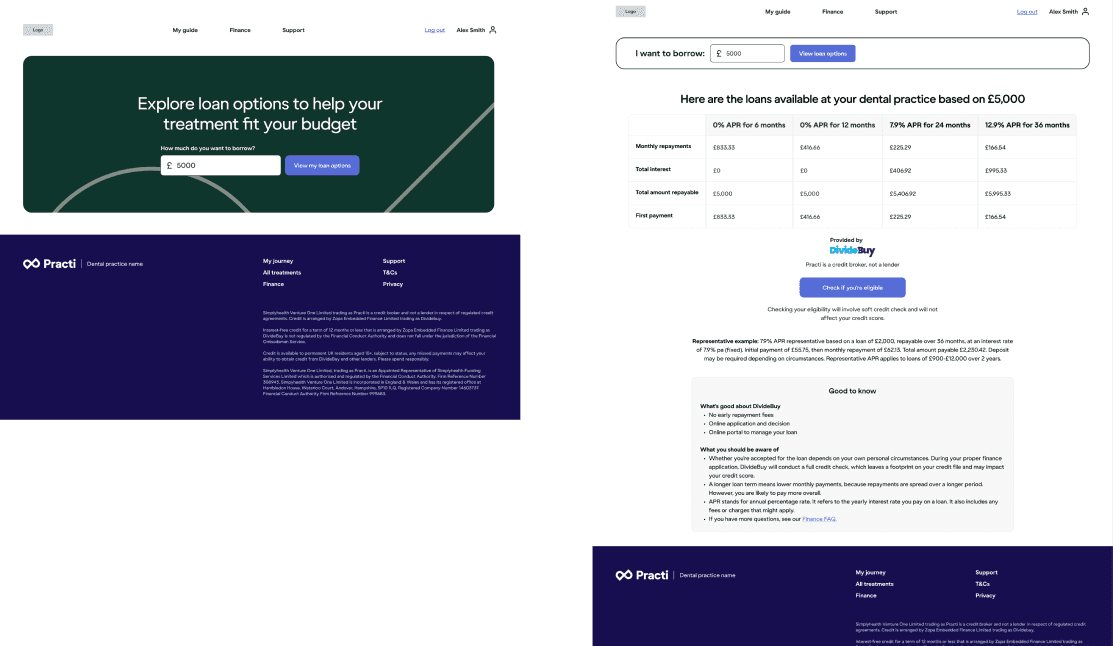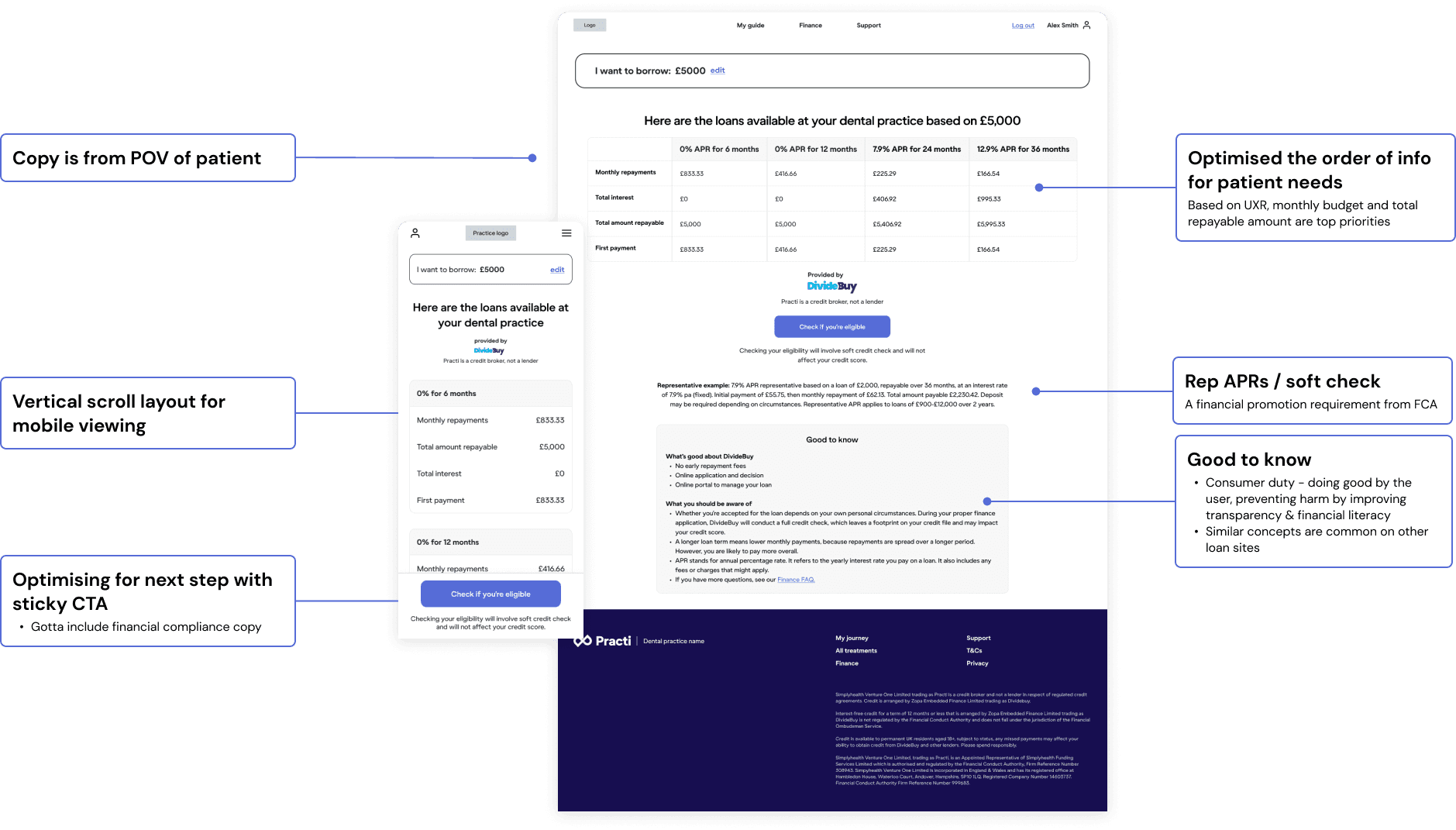Putting control of their money back into patients' hands @ Practi
Web App
Role | Design lead, working alongside my product manager and FE & BE engineers
Skills
Tools:
Figma
Wireframing
Prototyping
User research / User Interviews / Askable
Patients are waiting 3 years for NHS dental treatments, but aren't going through with them, why?
Cost of living means people might prioritise things other than dental care, even though dental care is extremely important and 3 years wait time is ridiculous, especially for urgent treatments
Conversely, our customers (dental practices) want to encourage patients to go through with the treatment.
Currently, patients are unable to see how much a loan might cost them until the application
This could lead to
❌ Rejections and negative impact on credit score
❌ Decrease in trust with Practi
❌ Worst of all - bad reflection on their dentist (our customers)
So the opportunity, is how might we be help patients to go through with dental treatments via taking out a loan?
Constraints meant that a finance calculator wasn't the obvious answer
Finance calculators are a standard offering for most institutions but specific constraints we had to work within meant it wasn't the easiest path.
Internal constraints
The loan calculator has to be able accessible from multiple points
This feature is very much a strategic stepping stone for the product’s direction so it had to be A) scalable and B) componentised to live in multiple locations
We have a set amount of loan options
Our loan calculator, effectively, is not really a calculator
Our dental practices offer between 1-4 options
Advantage: have more control of the layout since we don’t have infinite options
Lender constraints
We do not own the formula or data - Therefore, we cannot calculate by monthly budget because we don’t know the formula or compounding interest
Each loan has a min & max credit amount - This means that the patient cannot take out a loan if the treatment cost is outside of that range
Our hypothesis was that the solution should still work within a loan calculator mental model
IF we provide a loan calculator solution to the patients where they can enter the price of their treatment and get the approximate breakdown of the cost
THEN more patients will feel more in control of which loan they can apply for
AND accept the treatment
THEREFORE treatment conversion should increase

Mapping the IA, user & data flow to ensure every scenario is considered
Competitor analysis revealed our flow was unique due to constraints
This meant that relying on secondary research was not going to be enough.
Therefore, I conducted user interviews and created surveys with my PM to ascertain the most important factors for patients to consider taking out a loan.
The results
Lower monthly payments
Total cost of loan
Eligibility
Ease of comparison

Compliance was consulted throughout the process

It was essential for the unhappy path to be thoughtfully considered
Bad credit could damage a user's trust and eligibility, meaning potential unhappy paths had to be negated.

Key learnings
To us, it’s a loan calculator, to the user, it’s about keeping within budget and improving their health
In the current economic climate, improving our product’s user experience can significantly improve customers' emotional and financial well-being
Even though this feature seems to simply be a loan calculator, it’s key to just one part of the user’s journey in applying for credit and improving their overall health
Redefine success: working within constraints often produces a better result
There were lots of constraints, which felt impossible at first but forced me to think outside the box
It’s not a failure if it helps us learn
Look at the bigger picture. It’s a successful step in moving in direction of lead capture and unauthenticated access to Practi

